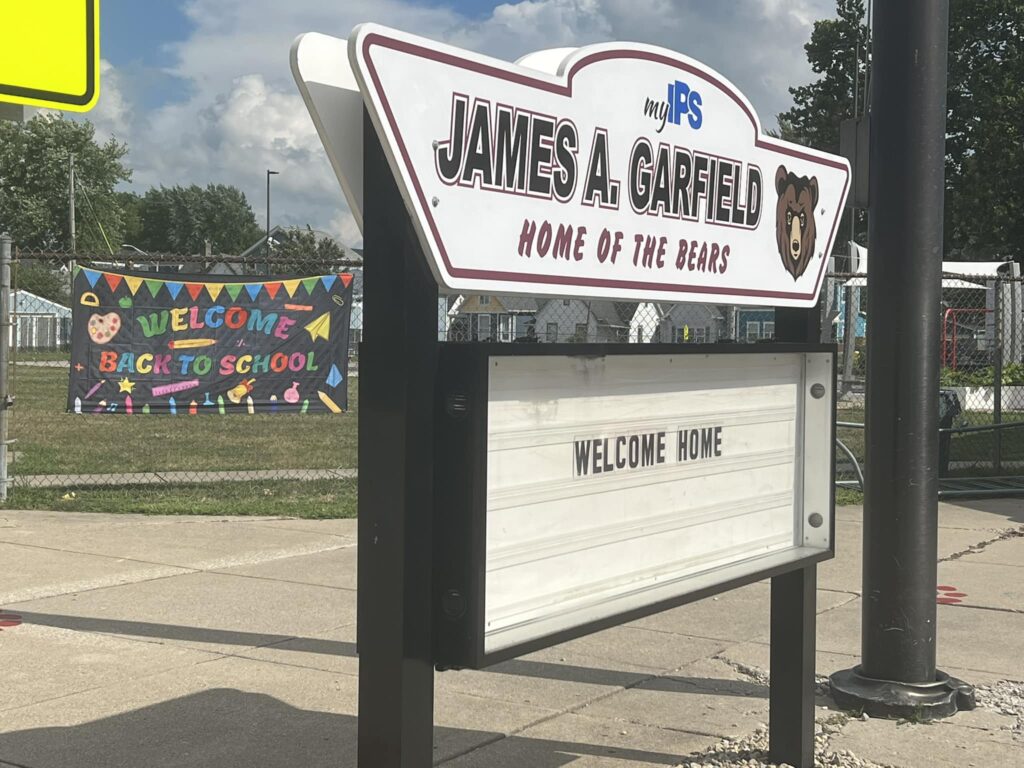
Location: Indianapolis, IN
Type of school: Public school
Grade levels: K–8
Number of students: 344
A Responsive Classroom school since: 2021
During the 2016–17 school year, James A. Garfield School handed out 164 suspensions to students, mainly for physical altercations or verbal aggression. “We had fights all the time,” describes Adrienne Kuchik, who, at the time, had just joined the school as assistant principal.
Then, over the next few years, something astonishing happened: the number of suspensions dropped precipitously, and it kept dropping:
How did Garfield educators and administrators achieve these remarkable results? It all started with the Responsive Classroom approach.
When Kuchik, who is now the executive director of schools for Indianapolis Public Schools, first arrived at James A. Garfield, she was surprised by the behavior issues she witnessed in the middle school hallway: “Students were walking out of classes, swearing at teachers, getting into fights … to be completely frank, it was out of control.”
In her previous job as a teacher at a school that used the Responsive Classroom approach, Kuchik had built strong relationships with her students using practices such as Morning Meeting and closing circle. So the first step she took was to consider how she could get to know the students at her new school better: “In order to make relationships with kids, you need to know where they are coming from. What are their needs? Where are their skill gaps?”
Kuchik noticed that students wanted to know that their teachers trusted them and cared that they were there. She also observed that students needed both the skills and opportunity to communicate their side of things, especially in moments of conflict. As a result, she started working with teachers to give students “the space to advocate for themselves, even if they were wrong.” From there, the teacher could start a dialogue—first, by telling the student, “Here’s what I hear you saying,” then by helping the student brainstorm a better way to handle things next time.
On top of making students feel heard, these conversations communicated a level of trust and respect that made them more receptive to what their teacher asked of them. Kuchik noticed a clear decline in disruptive behavior in the middle school hallway: “The culture shift was huge.”
One key way Kuchik supported this culture shift was by implementing problem-solving conferences. “Before, when students came back from suspension, maybe I’d have them sit down and talk to each other, but usually we all got too busy … It was a disservice because we have to learn how to talk to each other about our disagreements.”
Now, when two kids fought “they knew they were going to immediately be sitting shoulder to shoulder in my office.” Kuchik mediated the conversation by giving each student the opportunity to talk without interruption. She found that with only a little prompting, students could work through their misunderstandings together and come to an agreed-upon resolution.
Students genuinely responded to problem-solving conferences, to the point where they would even seek them out unprompted:
In conjunction with teaching self-advocacy skills, Garfield staff used several other Responsive Classroom practices to deepen students’ sense that they mattered and that teachers cared about them. Garfield educators and administrators started using positive teacher language, especially reinforcing language, to acknowledge students’ successes. They also replaced punitive consequences with logical ones. Finally, they created opportunities for Academic Choice by giving students a say in the service project that all middle school students participated in. These practices, Kuchik observed, “empowered our school community to create a positive and inclusive environment where everyone feels heard and valued.”
Kuchik has continued to expand the role of the Responsive Classroom approach since she first introduced it in the fall of 2017. In 2019, when she became Garfield’s head principal, she led a schoolwide implementation of the approach, including implementing Morning Meeting and closing circle in all elementary classrooms. More recently, every Garfield educator attended a Responsive Classroom training, after which Kuchik set up a dedicated time during the week for staff to share ideas, discuss successes, and problem-solve. Now, in her current role as executive director of schools for Indianapolis Public Schools, she is working on getting teachers at all fourteen schools in the district trained in the Responsive Classroom approach.
The reasoning for her decision is simple: “The results speak for themselves.”
[1] Like most schools, Garfield was heavily impacted by the effects of COVID during the 2020-2021 school year—students learned remotely for part of the fall, then again in the spring. So, as remarkable as the number zero is, equally as impressive is the fact the numbers stayed low even after students returned to in-person learning full time.